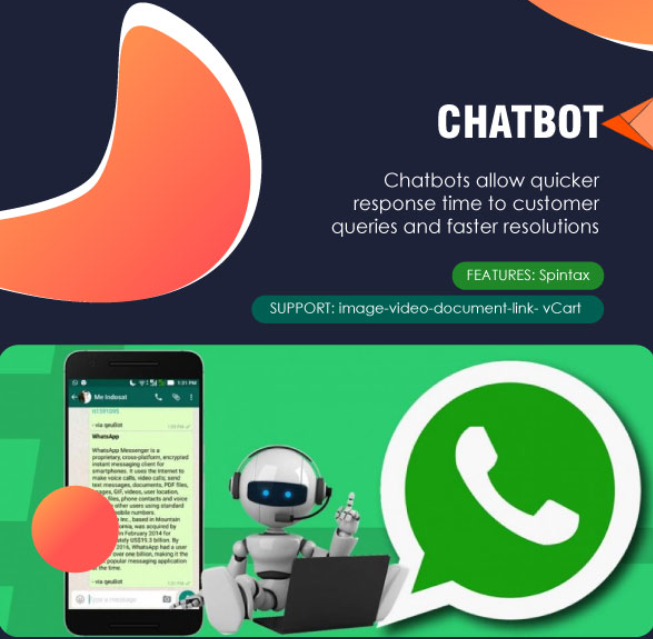What is a WhatsApp Chatbot

What is a WhatsApp Chatbot?
It’s easy to understand when people say that a Chatbot is a program that communicates with users with pre-filled messages. This communication could be in the form of texts.
But for a WhatsApp Chatbot, its definition comes with its application. A WhatsApp Chatbot basically allows you to automate your sales and customer support on your WhatsApp Account.
For example, if you run an eCommerce store using WhatsApp Business, a WhatsApp bot will show products and categories to your users when asked.
Do you really need a WhatsApp Chatbot?
Are you a business that wants to be on WhatsApp? If yes, why? Definitely because either you:
- want to boost your business using WhatsApp Business solution or
- want to bring your customer support on WhatsApp.
If you are looking to scale your business on WhatsApp, you need to provide the experience of your website or store on WhatsApp. You’ll be recommending all the products, showing categories, sending reminders and you’ll definitely need to talk to your customers.
How can you do that 24*7?
How many sales/support live chat agents can you hire to handle even say 1000 customers’ chats per day?
That’s why WhatsApp Automation is necessary. It is not only efficient and faster but also saves a lot of your costs.
A WhatsApp automation with an intelligent WhatsApp chatbot:
1. Will assist your users even in non-working hours.
2. It saves the cost of hiring multiple agents.
3. It can handle multiple chats at a single time, unlike humans.
4. It is fast and highly efficient.
WhatsApp Chatbot and Conversation Design
When you build a WhatsApp bot for your WhatsApp account, it works as the first interactive face of your business. So, it is very important to consider the most critical aspect i.e. conversation design.
Conversation Design: Conversation design is a process where you’ll build all the possible conversations that your customer can have with your WhatsApp Bot. It is the core of your WhatsApp automation.
Conversation design will help you identify the need of your customers, their ways of asking a single question.
It is important to know that users get frustrated when a Chatbot fails to deliver the right answer. The conversational design will help you boost UX and increase the percentage of the queries that your WhatsApp bot can answer successfully.
a. Build Multiple Chatbot Flows: You’ve to consider that there will be multiple conversational flows to get the users to your end goals which would probably be some purchase or form. With multiple flows, you can make your Conversational Design highly efficient.
b. Add Useful Fallbacks: No chatbot can answer 100% of the queries. There would be some moments when your WhatsApp chatbot will fail to resolve a query. This is called a Chatbot failure or Fallback.
While designing a conversation, avoid using a very common fallback reply like ‘sorry! I can’t answer this for now. Please rephrase that.’ Try to make it more interactive. You can also show the main menu or sub-menu so that the users can navigate to the desired thing from there.
c. Be The Support, Not A Salesperson: While designing the conversation make sure that the chatbot should be polite and must sound like an assistant. Please don’t over-market or brag too much about your products. Show only useful things to your customers when asked.
d. Avoid Long texts: How many times would you read a long text on WhatsApp? The same things happen with your users. Keep your chatbot’s responses short and effective. If you wish to explain something in detail attach a document or a media along with your short message.
e. Add Call To Action In The Closing Messages: Now, we’ve been building a WhatsApp Chatbot for What? To get more business to be precise. It is important to note that at the end of a conversation, the chatbot must ask the user to take an action such as ‘purchase now!’ or ‘Fill the details’.
The goal of conversation design is to improve the UX with your WhatsApp Chatbot. A good UX will also help you to build your brand value on WhatsApp.